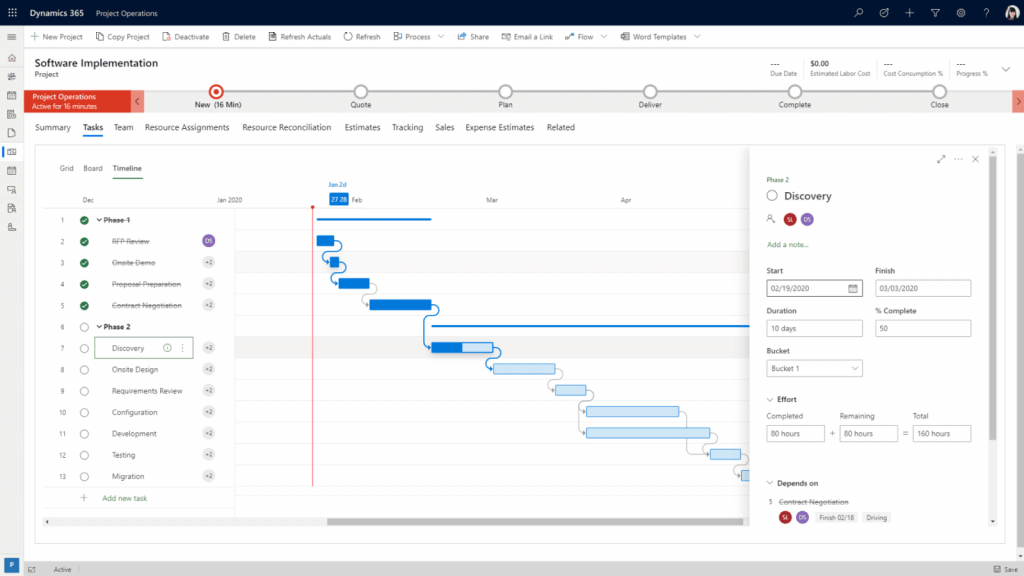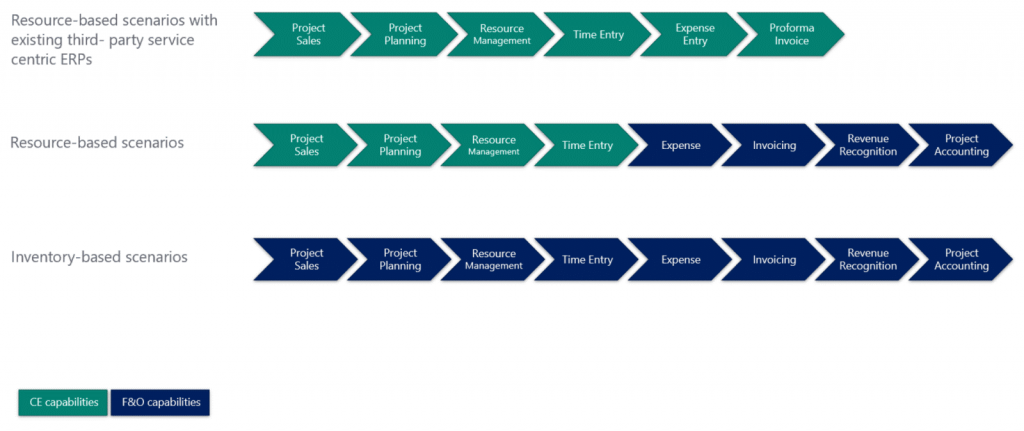I watched with interest over the last year or so, the evolution of the professional services application from Microsoft serving project-centric businesses, now called Dynamics 365 Project Operations. Why? Because within my area of Microsoft Dynamics 365 Finance and Supply Chain Management, we speak with manufacturing companies who manage industrial projects. So naturally I was curious whether the changes to the old PSA app might shift to serve the clients I refer to.
The best practices are common whether your project is managed from within a professional services company or an industrial manufacturing one; it is all about ensuring your resources are utilized to maximum effect, that you meet delivery milestones and ensure repeated business.
I wanted to set out where Project Operations fits and where it might not support all the key areas for specific organizations i.e. industrial manufacturers.
What are the key areas in Dynamics 365 Project Operations?

Within three areas, the application certainly supports professional services KPIs:
- Comprehensive financials: Built in dashboards to manage KPI performance, CPQ tool that can be configured, plus invoicing, expense management and project accounting features.
- Project best practice: project management tools, scheduling and time tracking features plus integration with Microsoft Teams for collaboration.
- Resource optimization: ability to match resource skills with project needs, resource allocation and workload spreading plus AI based scheduling to help anticipate demand.
Identified gaps for project management in industrial manufacturing

Industrial manufacturing companies, and by that, I mean those who run large scale operations with production plants producing machines and large equipment; have specific complexities when managing projects. These large builds have multiple project milestones that can stretch over long periods of time with complex supply chains in the balance.
Think of three possible project business scenarios (represented in the diagram below):
- Scenario 1: Service companies with no consumption of items stored and who use a third-party application to carry out their accounting
- Scenario 2: Project Operations and Finance & Operations combined. The ” Resource Non-stocked items ” mode targets service companies who also manage the an account in Finance & Operations (the link between CE+F&O).
- Scenario 3: For Finance & Operations users, with the Industrial Project Management additional functionalities. Where Resource / Stocked items are called upon within the project build.

Therefore, where your project uses resources and stocked items in an intercompany organization or from a sub-contractor; Dynamics 365 Project Operations doesn’t meet your needs efficiently; this app is more for professional services organizations who do not deal with physical production or inventory – so there is clearly a gap for industrial manufacturers.
Industrial Project Management ERP for Dynamics 365 as the answer
Financially and operationally it is important to have the tools to run high-value manufacturing projects, that can track cashflow, schedules, resources and equipment. If you miss a critical deadline along the way it impacts your ability to deliver, so visibility and deep integration with your production, procurement and finance processes are key.
That’s why my R&D team have developed Industrial Project Management, which integrates with Microsoft Dynamics 365 Finance and Microsoft Dynamics Supply Chain Management (was Finance and Operations). For me, it answers the gaps I identified and also provides the best practices a manufacturing company needs to follow.
If I look at the three areas that I set out earlier where we have developed additional features:
- Comprehensive financials: Cashflow visibility throughout a project is boosted
- Project best practice: Planning, co-ordination and visibility across project detail, with WBS management, project quotation tools, summary overviews for project managers
- Resource optimization: Deeper integration with production processes, production order consolidation, supplier performance management
- Plus manufacturing best practice is the fourth piece of the pie: BOM management with item version control, product certification for quality, equipment maintenance to reduce downtime, product life cycle management and so on.
This article is really about ensuring that manufacturers choose the right solution that fits your needs when wanting to follow project management best practice.
Please make sure you check with leading Microsoft Gold partners such as Prodware who have a good view across the entire Microsoft Dynamics 365 platform, supported by long-term sector knowledge, in order to match your needs with the right technology and process.
Originally published on LinkedIn






